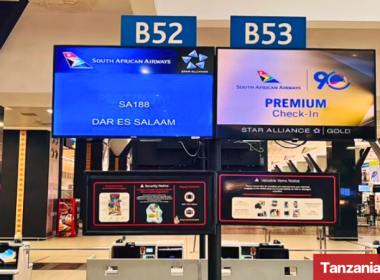Aviation
 Tanzania’s aviation industry is of critical importance to the economic development of the country and to strategic economic sectors like tourism and trade.
Tanzania’s aviation industry is of critical importance to the economic development of the country and to strategic economic sectors like tourism and trade.
Air transport is the preferred method of access to Tanzania for international visitors and, therefore, the sector has proven to be both important and heavily relied upon.
Aviation in Tanzania falls under the management and regulation of the Tanzania Airports Authority (TAA) and the Tanzania Civil Aviation Authority (TCAA).
The main functions of the TAA include to operate, manage, maintain, and develop all airports and airstrips in Tanzania. The TCAA promotes a regulatory environment that is conducive to the growth of a vibrant and competitive air transport industry.
There are 58 airports and more than 300 private airstrips in Tanzania owned by mining companies and tour operators.
There are three international airports in Tanzania: the Julius Nyerere International Airport (JNIA) in Dar Es Salaam, the commercial capital, the Kilimanjaro International Airport (JRO) near Arusha, and the Abeid Amani Karume International Airport (ZNZ) in Zanzibar.
Currently (2020), there are 19 airlines operating at the Julius Nyerere International Airport (JNIA), Tanzania’s largest and busiest airport.
The government is expanding the air transport sector, through buying aircraft and expanding infrastructures, whereby the government is planning to renovate and build 15 airports countrywide, including the international airport in Msalato-Dodoma.













